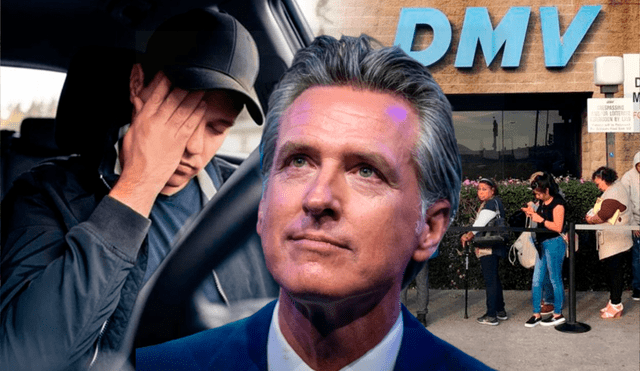Important California DMV law supported by Gavin Newsom: What drivers need to know to avoid fines
California’s AB 60 law, in effect since 2015, allows residents, regardless of immigration status, to obtain a legal driver’s license. The law has helped thousands drive legally, but failure to comply with requirements can lead to penalties.

Since its implementation in 2015, a traffic law in California has allowed thousands of people to legally obtain a driver's license, regardless of their immigration status. However, many residents are still unaware of this regulation, which could put their right to drive and their record with the Department of Motor Vehicles (DMV) at risk.
Failing to meet the requirements for a driver's license in California can result in DMV penalties, such as suspension of driving privileges, inability to renew vehicle registration, or substantial fines. The DMV reminds residents that having a valid license is not just a legal obligation, but also a protection against administrative consequences that can affect drivers' daily lives.
What is the DMV law supported by Gavin Newsom that every driver in California must know?
The AB 60 law, established in 2013 and effective in California since January 1, 2015, allows those unable to prove their legal status in the United States to obtain a driver's license, provided they meet the requirements set by the Department of Motor Vehicles (DMV).
Although the law was originally signed by former Governor Jerry Brown, the current administration under Gavin Newsom has supported its continuation, reaffirming its commitment to drivers' rights and the protection of applicants' data. This support has been crucial for thousands of people to trust the process and register to drive legally.
According to official DMV data, over a million AB 60 licenses have been issued in California since the law's implementation. While these licenses cannot be used as federal identification, they are fully valid for driving within the state, registering vehicles, and obtaining insurance.
What are the main penalties for driving without a valid license in California?
Driving without meeting the requirements for a valid license in California or driving with an invalid license can have serious consequences. The DMV has the authority to impose DMV fines, suspend driving rights, or even impound the vehicle in cases of repeat offenses.
The main penalties include:
- Fines over $250 for a first violation.
- Vehicle impoundment by traffic authorities.
- Inability to renew vehicle registration, leaving the driver in violation of the law.
- Accumulation of negative points on the driving record, affecting insurance rates and future procedures.
In addition to the financial impact, these penalties can complicate access to state benefits, job opportunities, and, in some cases, affect immigration processes by reflecting a poor record of compliance with regulations.
What are the requirements for obtaining a driver's license under the AB 60 law?
The requirements for obtaining a driver's license for immigrants in California under the AB 60 law are designed to validate the applicant's identity and residence without requiring proof of immigration status.
The main requirements are:
- Submit documents that verify identity and date of birth (foreign passport, consular card, birth certificate, etc.).
- Prove California residency through utility bills, lease agreements, or bank statements.
- Complete the official application form (DL 44).
- Pass a written knowledge test and a practical driving test.
- Provide fingerprints and a recent photograph.
- Sign an affidavit stating that the applicant does not hold another valid license in the U.S.
These steps ensure that the driver can legally operate a vehicle, avoiding penalties and becoming part of the DMV registry.












